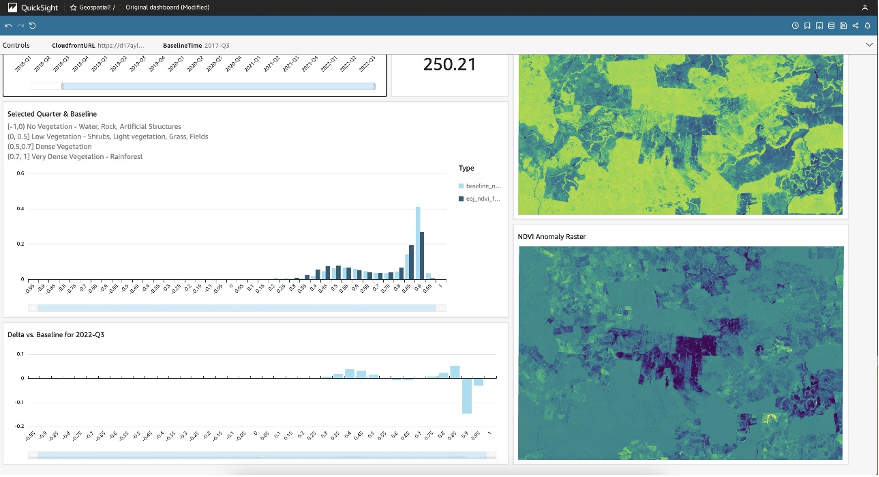AWS Machine Learning Blog
Tag: Amazon SageMaker geospatial
Use mobility data to derive insights using Amazon SageMaker geospatial capabilities
Geospatial data is data about specific locations on the earth’s surface. It can represent a geographical area as a whole or it can represent an event associated with a geographical area. Analysis of geospatial data is sought after in a few industries. It involves understanding where the data exists from a spatial perspective and why […]
Remote monitoring of raw material supply chains for sustainability with Amazon SageMaker geospatial capabilities
Deforestation is a major concern in many tropical geographies where local rainforests are at severe risk of destruction. About 17% of the Amazon rainforest has been destroyed over the past 50 years, and some tropical ecosystems are approaching a tipping point beyond which recovery is unlikely. A key driver for deforestation is raw material extraction […]
Monitoring Lake Mead drought using the new Amazon SageMaker geospatial capabilities
Earth’s changing climate poses an increased risk of drought due to global warming. Since 1880, the global temperature has increased 1.01 °C. Since 1993, sea levels have risen 102.5 millimeters. Since 2002, the land ice sheets in Antarctica have been losing mass at a rate of 151.0 billion metric tons per year. In 2022, the […]
Damage assessment using Amazon SageMaker geospatial capabilities and custom SageMaker models
In this post, we show how to train, deploy, and predict natural disaster damage with Amazon SageMaker with geospatial capabilities. We use the new SageMaker geospatial capabilities to generate new inference data to test the model. Many government and humanitarian organizations need quick and accurate situational awareness when a disaster strikes. Knowing the severity, cause, […]
Build an agronomic data platform with Amazon SageMaker geospatial capabilities
The world is at increasing risk of global food shortage as a consequence of geopolitical conflict, supply chain disruptions, and climate change. Simultaneously, there’s an increase in overall demand from population growth and shifting diets that focus on nutrient- and protein-rich food. To meet the excess demand, farmers need to maximize crop yield and effectively […]




